|
|
【中文标题】一百张最有影响力的照片 之十 完
【原文标题】Most Influential Photos
【登载媒体】时代周刊
【原文作者】Ben Goldberger
【原文链接】http://100photos.time.com/photos/harold-edgerton-milk-drop
坠落
理查德•德鲁
2001年
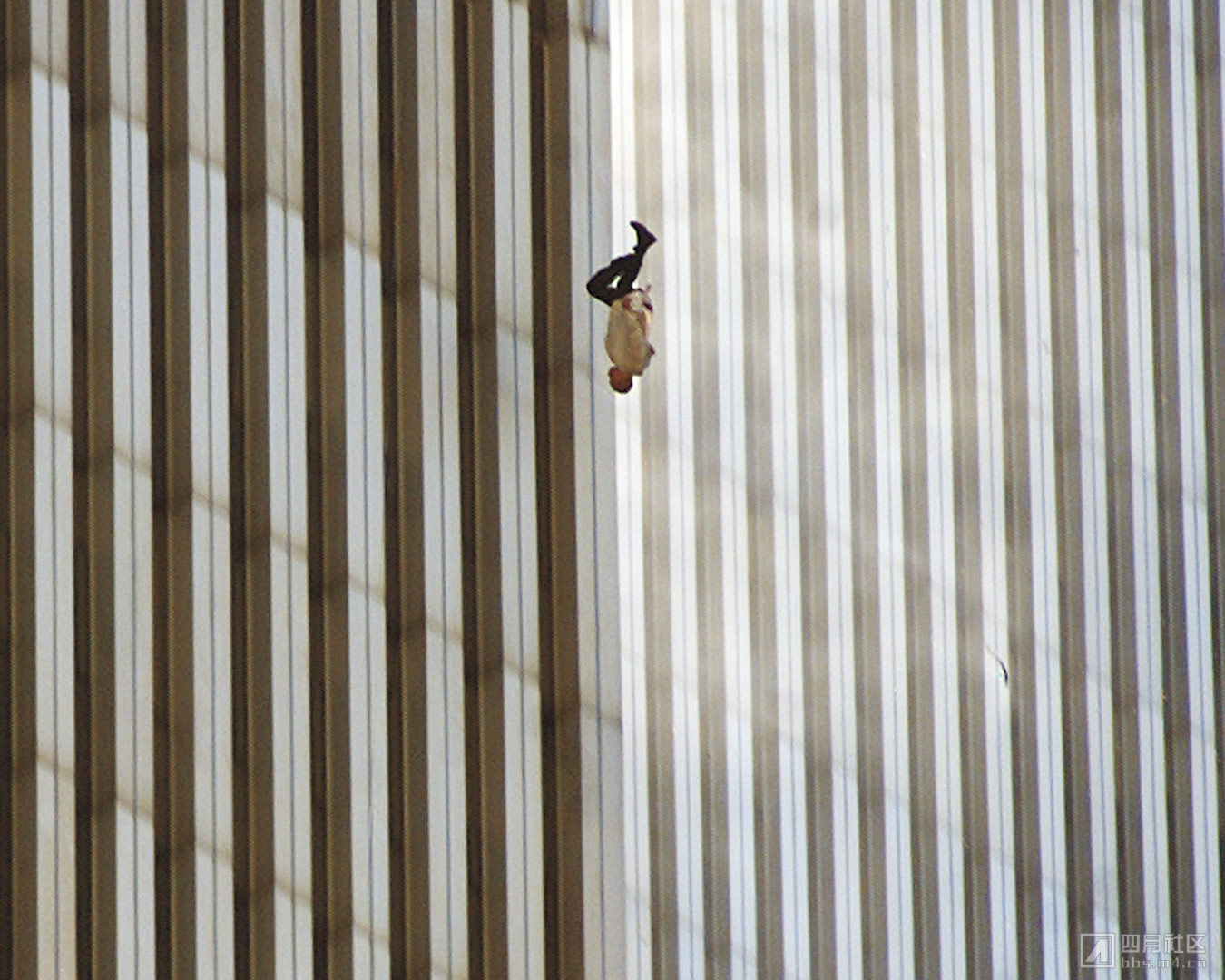
9/11事件中被广泛传播的都是飞机和双塔的照片,不是人们的照片。“坠落”是个例外。理查德•德鲁在2001年9月11日事件发生后不久拍下这张照片,这是一个男人在面对大厦将倾时本能的反应,无助的个体与作为背景的摩天大楼形成鲜明的对比。在那悲剧的一天里,“坠落”是展现人们死亡瞬间流传最广的一张照片。袭击后的几天里,美国各大报纸都刊登了这张照片,但来自读者的强烈反对让它暂时销声匿迹。这的确是一幅令人难以接受的场景,男人像箭头一样直落地面的同时,正好位于两座塔楼的中间。这个人的身份依然不为人知,但应该是位于北塔顶楼世贸餐厅的员工。“坠落”所传达出的真实力量,并不是拍摄对象的身份,而是他的化身:一个仓促应战的无名战士,面对一场充满不确定因素的战争,在历史中永存。
蒙面人
伊万•弗雷德里克中士
2003年
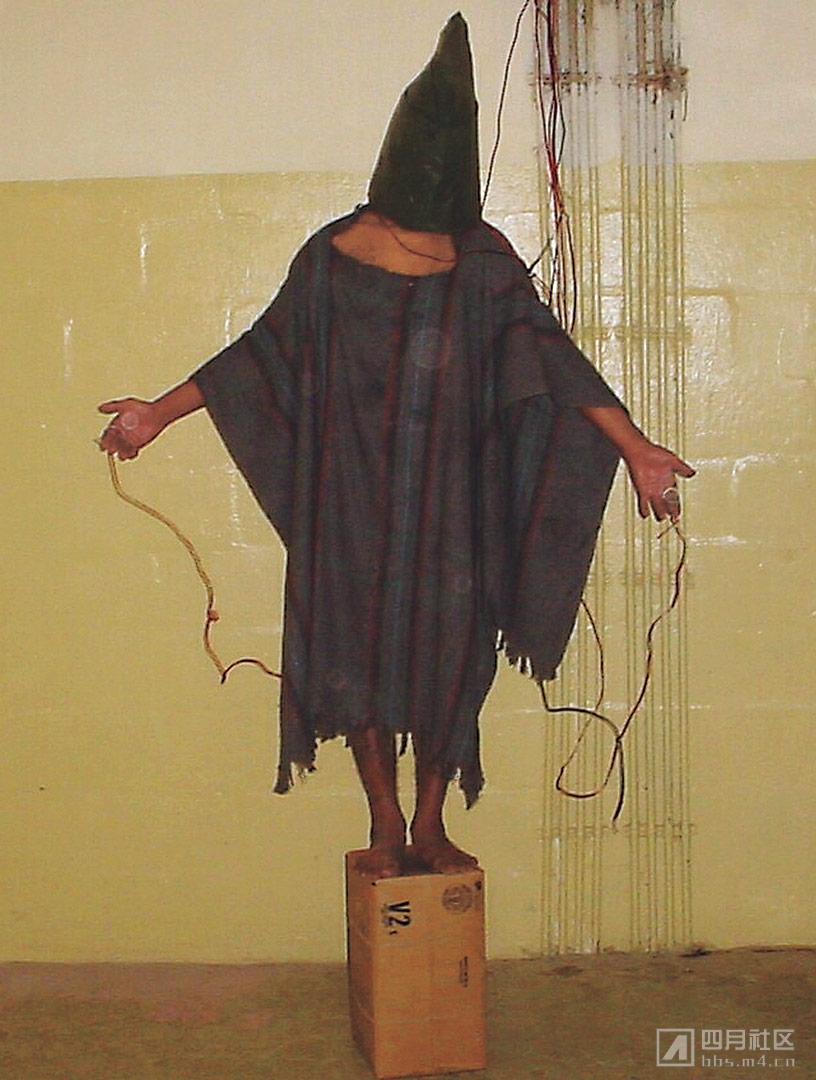
数百名记者曾经报道过伊拉克战争,但是来自战争最让人铭记不忘的照片却不是由专业摄影师拍摄的,而是来自一名美国陆军中士伊万•弗雷德里克。在2003年最后的几个月,弗雷德里克是阿布格莱布监狱的高级军管,这座监狱位于巴格达郊外,萨达姆•侯赛因曾经把它变成所有伊拉克人的梦魇,当时被美军用来羁押叛乱嫌犯。在伊拉克战争开始之前,很多人就曾经质疑美国、英国及其盟国入侵伊拉克,推翻萨达姆政府的动机。几个国家宣称他们是给伊拉克送去民主,最能推翻这个论调的是发生在阿布格莱布监狱的丑闻。弗雷德里克和其他几名士兵在阿布格莱布对伊拉克犯人施以酷刑,更令人不可思议的是他们拍摄了数千张虐待、羞辱、折磨犯人的数码照片,并分享给其他人。流传最广的是“蒙面人”,或许原因在于它不像其它照片那么露骨,所以更多地出现在主流媒体上。照片中的男人两臂伸开,他被剥夺了视力、衣服、尊严,连接着电线的双手说明他还被剥落了安全感。再看他的姿势,就像一个垂头丧气的耶稣。似乎,号称自由卫士的入侵者没有什么神圣的光环。
棺材禁令
塔米•西力西奥
2004年

截止到2004年4月,已经有大约700名士兵在伊拉克战死,但是装有尸体的棺材回国的画面从未出现过。美国政府在1991年禁止新闻机构拍摄这些场景,理由是它会侵犯亲属的隐私权和死者的尊严。在批评者眼中,这项政策仅仅是为了洗白一场不断升级的血腥冲突。塔米•西力西奥是政府合同运输企业在科威特的一名员工,她无法继续忍受越来越多的尸体,赶到必须要让别人看到这一切。4月7日,西力西奥用她的尼康酷片相机拍摄到20个用国旗覆盖的棺材,从科威特运往特拉华州多佛空军基地。她用电子邮件把照片发给美国的朋友,之后被转发给《西雅图日报》的图片编辑。在得到西力西奥的同意之后,《西雅图日报》在4月18日头版发布了照片,立即引起轩然大波。几天后,西力西奥就被辞退,社会掀起了一阵有关发表照片的道德问题的争论。尽管政府声称阵亡士兵的家属支持这项政策,但很多人觉得不应该禁止发布照片。2009年底,巴拉克•奥巴马总统任期的第一年,五角大楼取消了这项禁令。
检查站附近的伊拉克女孩
克里斯•洪德罗斯
2005年
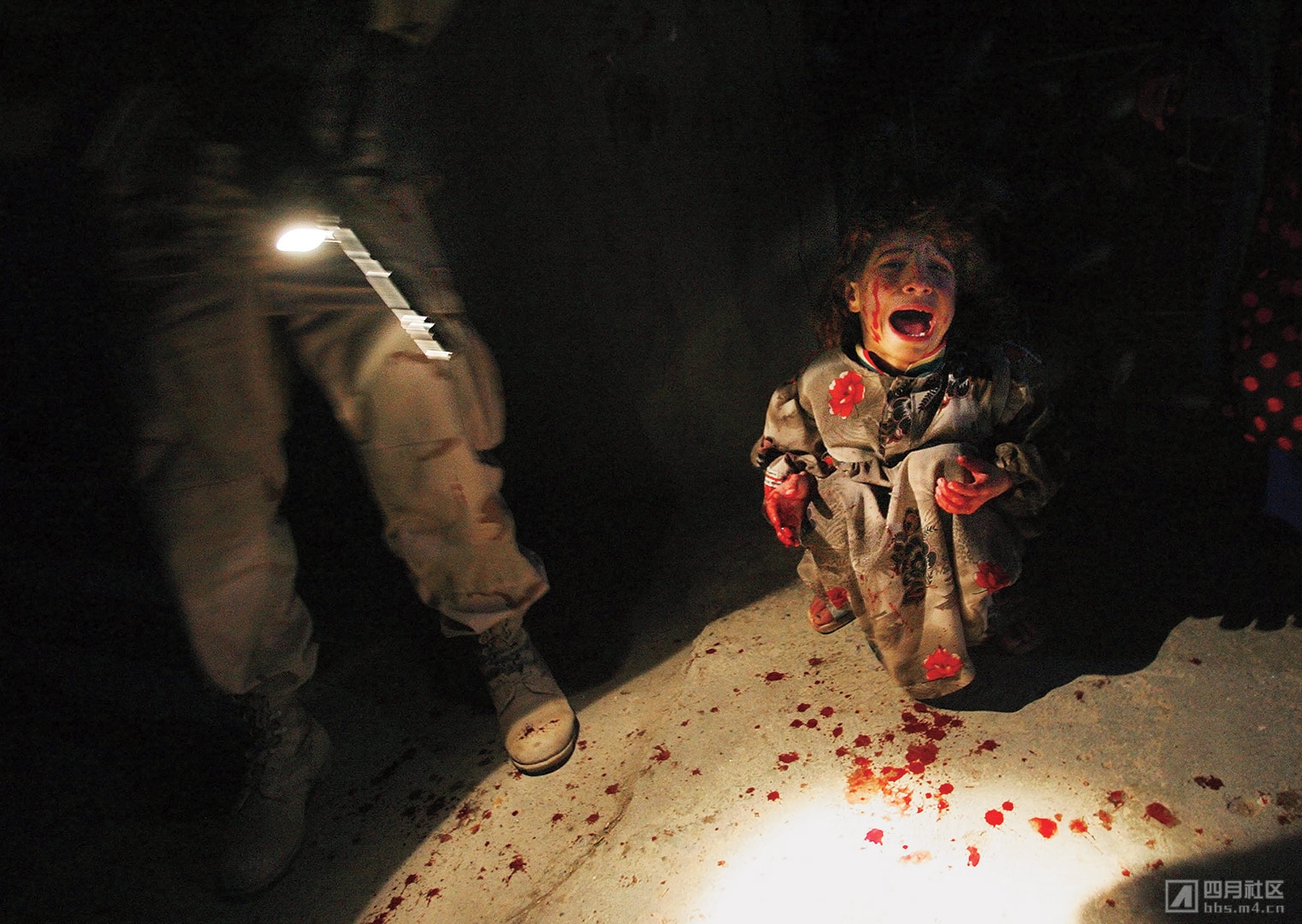
在美国摄影记者克里斯•洪德罗斯拍下萨马尔•哈桑的几分钟之前,这个小女孩正和家人一起坐在汽车里,从伊拉克城开往泰勒阿费尔。现在,萨马尔变成了孤儿,她的父母被美军士兵开枪打死,因为他们担心车上有叛乱分子或者有汽车炸弹。当时是2005年1月,伊拉克战争最激烈的时候。在混乱的冲突中,这种恐怖的场景并不鲜见,但从未有人在现场记录下这一刻。枪击事件发生时,为Getty图片社工作的洪德罗斯就在现场。他立即把照片发送出去,第二天,全世界都看到了。照片导致美军重新修订了检查流程,但其更大的影响力在于,推动已经满腹狐疑的公众进一步质问,美军士兵为什么要杀害他们所声称要去解放和保护的人?
洪德罗斯在2011年利比亚内战中被害。
刚果大猩猩
布伦特•斯蒂尔顿
2007年
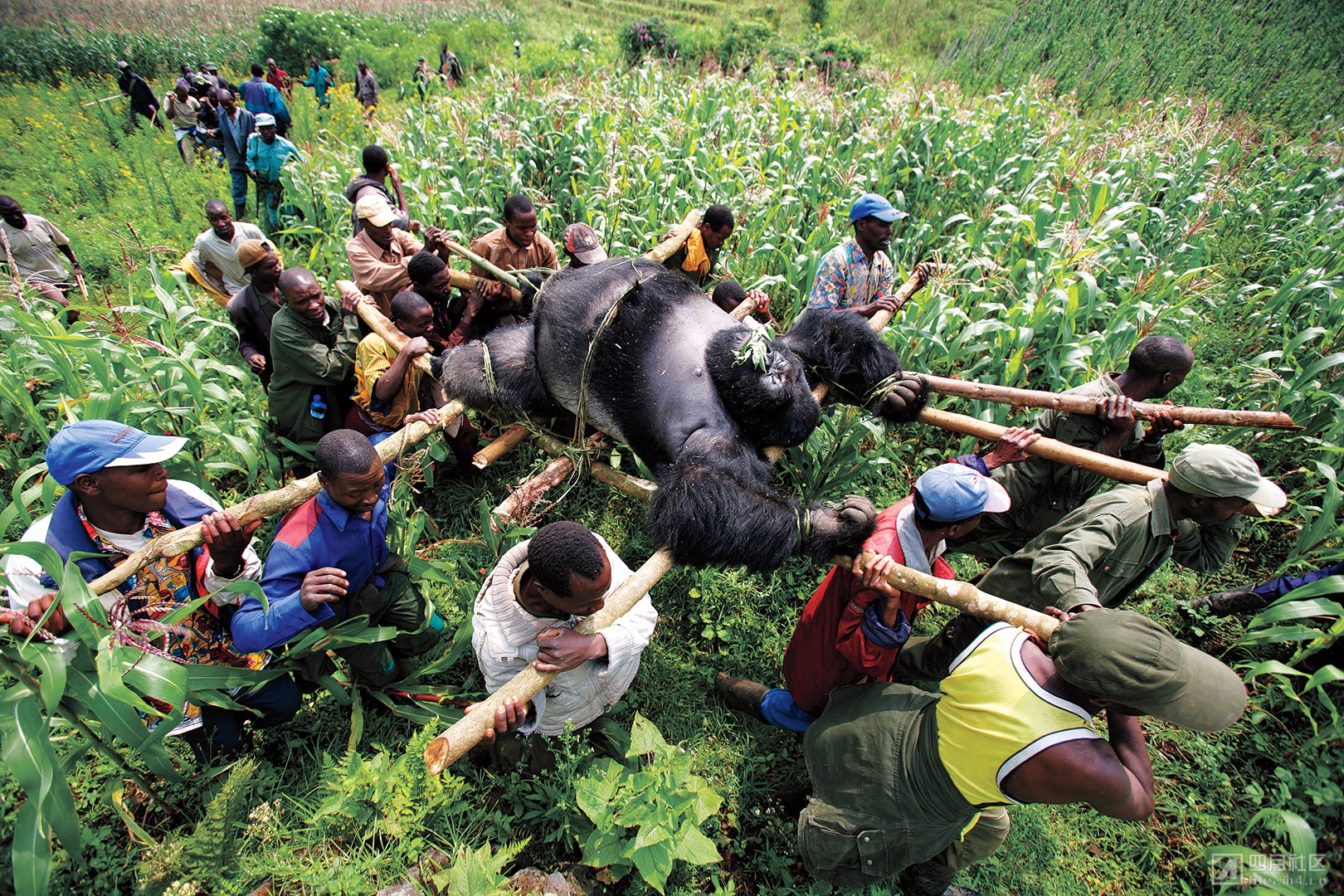
银背大猩猩塞恩克维克维重达500磅,当它的尸体被绑在一个简易的架子上,至少需要12个人才能扛起来。布伦特•斯蒂尔顿在刚果民主共和国维龙加国家公园内拍摄到这个场景。公园里发生了暴力冲突,世界上大约一半的濒危动物生活在这里,塞恩克维克维和其它几只大猩猩在冲突中被打死。
斯蒂尔顿拍摄到当地居民和园区巡逻人员带有敬意地搬运塞恩克维克维时,公园正在遭受非法砍伐人员的袭击,他们的目的是生产木炭,这项生意在卢旺达种族屠杀之后兴起。照片中的塞恩克维克维体形巨大,但隐约浮现出人类的神态。人们意识到,中非地区的冲突不仅让人类受害,还影响到当地的环境和动物。斯蒂尔顿的照片在《新闻周刊》发表三个月之后,九个非洲国家——包括刚果——签署了一项有法律约束力的协议,共同保护维龙加的山地大猩猩。
内达之死
摄影师不详
2009年
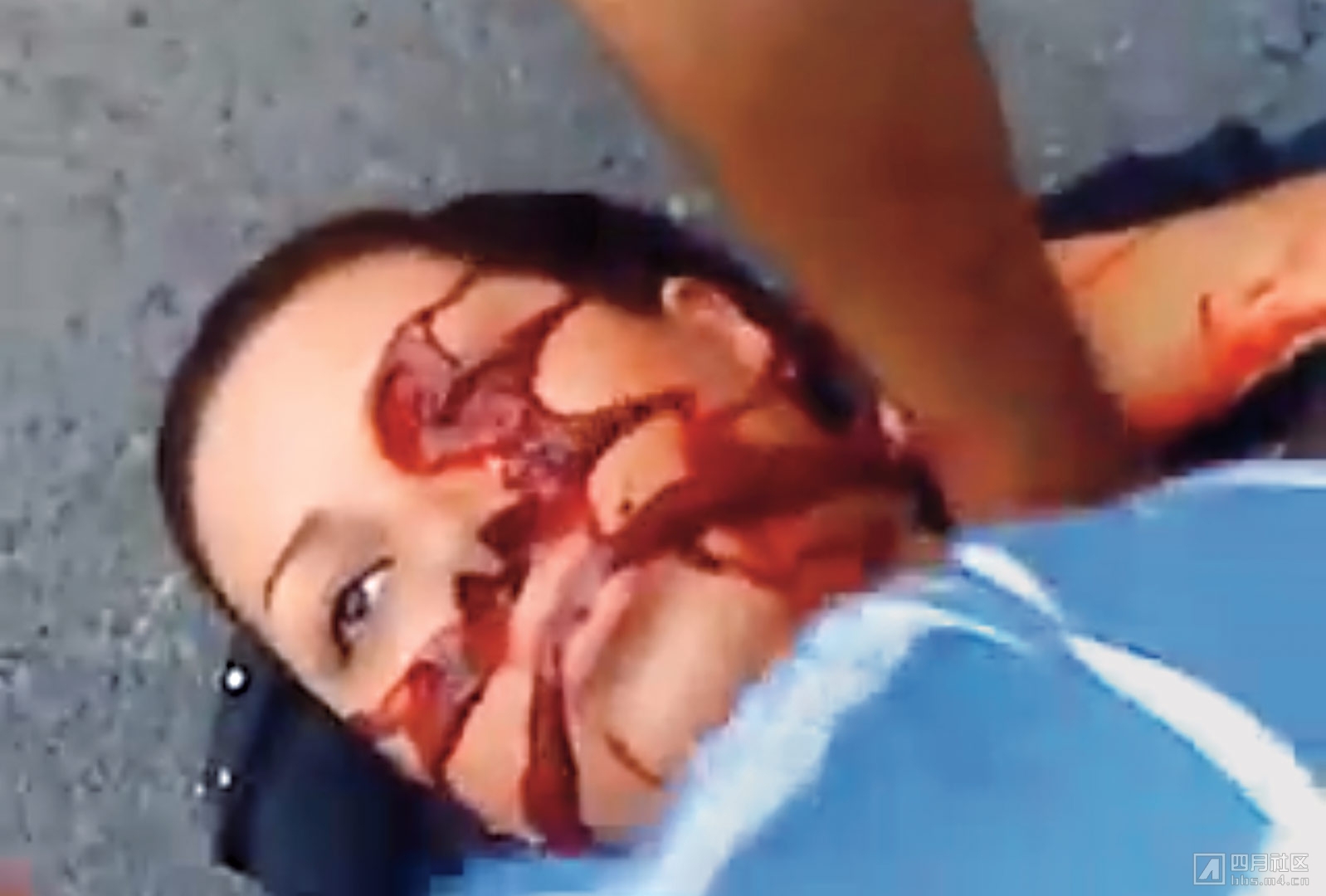
内达•阿迦•索乌坦并不像一个网络名人。2009年6月20日,这位26岁的女士走出她停在德黑兰街道上的汽车,附近有很多伊朗人在抗议总统穆罕默德•艾哈迈德内贾德荒唐的再次当选。这个伊斯兰共和国正在经历自1979年革命以来最严重的社会动荡。政府宣布示威活动违法,禁止大部分外国媒体报道。也就是说,现场市民用手机承担起见证现场的任务。大约在下午6:30,阿迦•索乌坦被一颗子弹击中胸口,据说是亲政府的狙击手开枪,但没有人被起诉。一个简短视频中的画面定格在鲜红的血液在她脸上形成网状。这张照片是最早被网络疯传的图片,它引起了全世界的关注。几个小时之后,视频被匿名上传到YouTube,美国总统也看到了。证明数码时代不仅能连接人们,而且能撬开最牢固的政权。
战局室
皮特•苏扎
2011年

白宫官方摄影师会记录下总统娱乐、工作、与世界领导人通电话、在椭圆形办公室主持会议的景象。但有时候,独特的身份让他们可以捕捉到历史的重要时刻,成为我们共同的记忆。2011年5月1日,美国特种部队突袭奥萨马•本•拉登在巴基斯坦的营地,并且击毙了这个恐怖分子头领,皮特•苏扎当时就在战局室里。但是苏扎的照片里既没有军事行动,也没有本•拉登,他拍摄的是那些观看秘密行动进程的人。巴拉克•奥巴马总统下令行动开始,但和其他人一样,他也只不过是个旁观者。他双眼直视屏幕,眉头紧皱。国务卿希拉里•克林顿捂着嘴巴,等待最终结局。
当晚,奥巴马在白宫发表的全国讲话中宣布,本•拉登已经死亡。尸体的照片从未公布,苏扎的照片,以及它所蕴含的紧张气氛,成为恐怖战争取得最重要的胜利这一刻唯一被公开的图像。
朝鲜
大卫•古特菲尔德
2013年
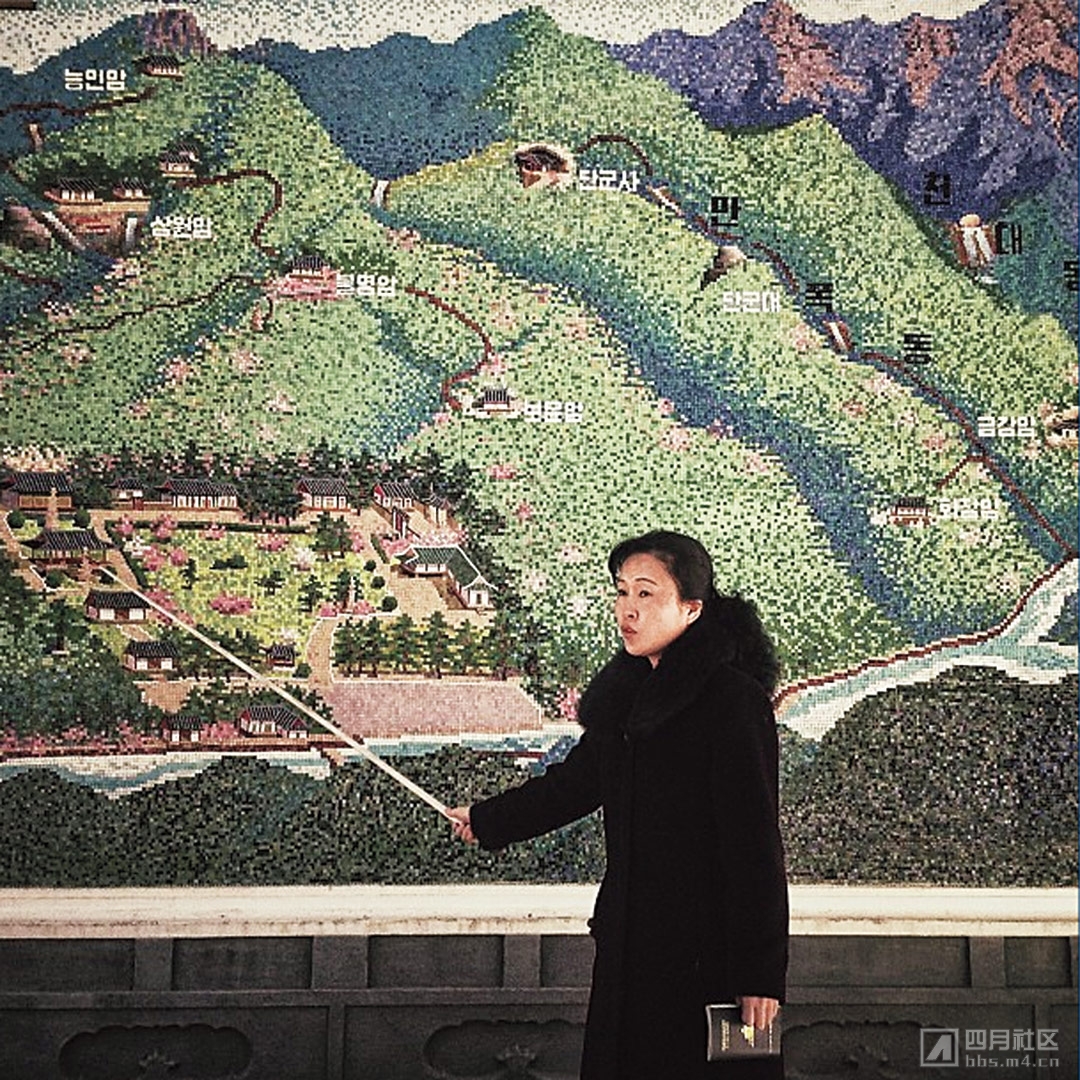
大卫•古特菲尔德是美联社驻亚洲的首席摄影师,美联社是第一家在朝鲜设立分社的国际新闻机构。他开始频繁造访这个国家,朝鲜依然禁止外国记者进入,60年来它一直隐藏在公众视野之外。古特菲尔德忠实地记录了官方的活动和政府在平壤组织的盛装游行,但他总是在寻找导游建议之外的普通人的平凡生活。2013年初,朝鲜对外国人开放了3G网络,突然之间古特菲尔德可以即时分享他所看到的景象。2013年1月18日,他用iPhone上传了第一张来自隐秘国度的照片到Instagram。同时他在有众多粉丝的账户上写道:“通往朝鲜的窗户裂开一道缝隙。但对于不能使用这种服务的朝鲜人民来说,外部世界的门窗依然紧闭。”利用新出现的分享技术,古特菲尔德撬开了世界上最封闭的社会。他还鼓励其他外国人也这样做,展现一个在主流媒体中从未出现过的、极权国家的平凡单调生活景象,让外部世界看到一个清晰的朝鲜。
奥斯卡自拍
布拉德利•库珀
2014年

这是一个明星云集的互联网时代。在2014年奥斯卡颁奖典礼中,主持人艾伦•德詹妮斯走到人群中,招来一批世界上最大牌的明星,拍一张自拍照。当布拉德利•库珀举起手机,梅丽尔•斯特里普、布拉德•皮特、詹妮弗•劳伦斯和凯文•斯派西等人都凑过来,在镜头前扮鬼脸。但德詹妮斯接下做的事情,让好莱坞的浮华变成了一张被疯传的图片。库珀拍下照片之后,德詹妮斯立即把它上传到推特,照片被转发了300万次,创下历史之最。
这是三星公司令人羡慕的一次成功营销。德詹妮斯使用这家公司的手机拍下照片,它的品牌在电视广告“自拍时刻”中占据了显著的位置。三星不愿明确承认他们背后的策划,但是它的公关部门承认这张照片给公司带来了10亿美元的利益。如果没有网络的极速传播,没有图片瞬间可以分享到全世界的技术,也就没有这项成功的举动。
艾兰•库尔迪
尼鲁弗•戴米尔
2015年

叙利亚的战争已经持续了四年,艾伦•库尔迪的父母带着三岁的小男孩和他五岁的哥哥坐上一个冲气橡皮艇,从土耳其海岸出发,前往三英里之外的希腊科斯岛。出发几分钟之后,一个大浪掀翻了小船,母亲和两个孩子落水溺亡。几个小时之后,在海滨城市博德鲁姆的海滩上,杜甘新闻社的尼鲁弗•戴米尔看到了艾伦。他的面孔朝下,屁股翘起,就像在熟睡。她说:“做什么都为时已晚了,怎样也不能让他再活过来。”于是戴米尔举起了她的相机:“我想,这或许是让这个沉默的尸体发出呼喊声的唯一方式。”
这张照片定义了一场依然持续的战争,在戴米尔按下快门时,这场战争已经导致22万人死亡。而且这个场景并不是出现在被世界刻意遗忘的叙利亚,而是出现在难民大量涌入的欧洲门口。做好出远门打扮的孩子,倒在两个世界之间——海水已经洗净了他身上的尘土,西方人已经无法识别这个背负陌生经历的异乡人。这是库尔德人自己选择的道路,移民的道路充满了向往和绝望。这家人在穿越边境时,已经躲过了血腥的屠杀,海上的行程是为了追求更好的生活,以及——至少在未来几个月——为身后成千上万的难民打通一条逃生的道路。
戴米尔的照片在几个小时内横扫社交媒体,每一次转发都积蓄着能量。新闻媒体不得不发布这张照片——要么他们就必须公开解释为什么不发布。欧洲政府突然之间打开了边境大门,一个星期之后,满载叙利亚人的火车进入德国。一场战争中不为人知的痛苦突然之间散播开来,就是因为一张小小的照片。
原文:
Falling Man
Richard Drew
2001
The most widely seen images from 9/11 are of planes and towers, not people. Falling Man is different. The photo, taken by Richard Drew in the moments after the September 11, 2001, attacks, is one man’s distinct escape from the collapsing buildings, a symbol of individuality against the backdrop of faceless skyscrapers. On a day of mass tragedy, Falling Man is one of the only widely seen pictures that shows someone dying. The photo was published in newspapers around the U.S. in the days after the attacks, but backlash from readers forced it into temporary obscurity. It can be a difficult image to process, the man perfectly bisecting the iconic towers as he darts toward the earth like an arrow. Falling Man’s identity is still unknown, but he is believed to have been an employee at the Windows on the World restaurant, which sat atop the north tower. The true power of Falling Man, however, is less about who its subject was and more about what he became: a makeshift Unknown Soldier in an often unknown and uncertain war, suspended forever in history.
The Hooded Man
Sergeant Ivan Frederick
2003
Hundreds of photojournalists covered the conflict in Iraq, but the most memorable image from the war was taken not by a professional but by a U.S. Army staff sergeant named Ivan Frederick. In the last three months of 2003, Frederick was the senior enlisted man at Abu Ghraib prison, the facility on the outskirts of Baghdad that Saddam Hussein had made into a symbol of terror for all Iraqis, then being used by the U.S. military as a detention center for suspected insurgents. Even before the Iraq War began, many questioned the motives of the American, British and allied governments for the invasion that toppled Saddam. But nothing undermined the allies’ claim that they were helping bring democracy to the country more than the scandal at Abu Ghraib. Frederick was one of several soldiers who took part in the torture of Iraqi prisoners in Abu Ghraib. All the more incredible was that they took thousands of images of their mistreatment, humiliation and torture of detainees with digital cameras and shared the photographs. The most widely disseminated was “the Hooded Man,” partly because it was less explicit than many of the others and so could more easily appear in mainstream publications. The man with outstretched arms in the photograph was deprived of his sight, his clothes, his dignity and, with electric wires, his sense of personal safety. And his pose? It seemed deliberately, unnervingly Christlike. The liberating invaders, it seemed, held nothing sacred.
Coffin Ban
Tami Silicio
2004
By April 2004, some 700 U.S. troops had been killed on the battlefield in Iraq, but images of the dead returning home in coffins were never seen. The U.S. government had banned news organizations from photographing such scenes in 1991, arguing that they violated families’ privacy and the dignity of the dead. To critics, the policy was simply a way of sanitizing an increasingly bloody conflict. As a government contractor working for a cargo company in Kuwait, Tami Silicio was moved by the increasingly human freight she was loading and felt compelled to share what she was seeing. On April 7, Silicio used her Nikon Coolpix to photograph more than 20 flag-draped coffins as they passed through Kuwait on their way to Dover Air Force Base in Delaware. She emailed the picture to a friend in the U.S., who forwarded it to a photo editor at the Seattle Times. With Silicio’s permission, the Times put the photo on its front page on April 18—and immediately set off a firestorm. Within days, Silicio was fired from her job and a debate raged over the ethics of publishing the images. While the government claimed that families of troops killed in action agreed with its policy, many felt that the pictures should not be censored. In late 2009, during President Barack Obama’s first year in office, the Pentagon lifted the ban.
Iraqi Girl at Checkpoint
Chris Hondros
2005
Moments before American photojournalist Chris Hondros took this picture of Samar Hassan, the little girl was in the backseat of her family’s car as they drove home from the Iraqi city of Tall ‘Afar. Now Samar was an orphan, her parents shot dead by U.S. soldiers who had opened fire because they feared the car might be carrying insurgents or a suicide bomber. It was January 2005, and the war in Iraq was at its most brutal. Such horrific accidents were not rare in that chaotic conflict, but they had never been documented in real time. Hondros, who worked for Getty Images, was embedded with the Army unit when the shooting happened. He transmitted his photographs immediately, and by the following day they were published around the world. The images led the U.S. military to revise its checkpoint procedures, but their greater effect was in compelling an already skeptical public to ask why American soldiers were killing the people they had ostensibly come to liberate and protect.
Hondros was killed during the civil war in Libya in 2011.
Gorilla in the Congo
Brent Stirton
2007
Senkwekwe the silverback mountain gorilla weighed at least 500 pounds when his carcass was strapped to a makeshift stretcher, and it took more than a dozen men to hoist it into the air. Brent Stirton captured the scene while in Virunga National Park in the Democratic Republic of Congo. Senkwekwe and several other gorillas were shot dead as a violent conflict engulfed the park, where half the world’s critically endangered mountain gorillas live.
When Stirton photographed residents and park rangers respectfully carrying Senkwekwe out of the forest in 2007, the park was under siege by people illegally harvesting wood to be used in a charcoal industry that grew in the wake of the Rwandan genocide. In the photo, Senkwekwe looks huge but vaguely human, a reminder that conflict in Central Africa affects more than just the humans caught in its cross fire; it also touches the region’s environment and animal inhabitants. Three months after Stirton’s photograph was published in Newsweek, nine African countries—including Congo—signed a legally binding treaty to help protect the mountain gorillas in Virunga.
The Death of Neda
Unknown
2009
Neda Agha-Soltan was an unlikely viral icon. On June 20, 2009, the 26-year-old stepped out of her car on a Tehran street near where Iranians were massing in protest of what was seen as the farcical re-election of President Mahmoud Ahmadinejad. The Islamic Republic was experiencing its worst unrest since the 1979 revolution. The state made it illegal to join the demonstrations and barred most foreign media, which meant the burden of bearing witness was largely left to the citizens who waded in, cell phones in hand. It was around 6:30 p.m. when Agha-Soltan was struck in the chest by a single bullet, said to originate from a progovernment sniper, though no one was ever charged. Men struggled to save her as others focused their cameras on the unfolding tragedy. One frame from the footage freezes her final gaze as streaks of deep red formed a web on her face. The image, among the earliest and easily the most significant to ever go viral, commanded the world’s attention. Within hours, footage uploaded anonymously to YouTube had been viewed by the President of the United States—proof that our new digital age could not only connect people; it could pry open even the staunchest of regimes.
The Situation Room
Pete Souza
2011
Official White House photographers document Presidents at play and at work, on the phone with world leaders and presiding over Oval Office meetings. But sometimes the unique access allows them to capture watershed moments that become our collective memory. On May 1, 2011, Pete Souza was inside the Situation Room as U.S. forces raided Osama bin Laden’s Pakistan compound and killed the terrorist leader. Yet Souza’s picture includes neither the raid nor bin Laden. Instead he captured those watching the secret operation in real time. President Barack Obama made the decision to launch the attack, but like everyone else in the room, he is a mere spectator to its execution. He stares, brow furrowed, at the raid unfolding on monitors. Secretary of State Hillary Clinton covers her mouth, waiting to see its outcome.
In a national address that evening from the White House, Obama announced that bin Laden had been killed. Photographs of the dead body have never been released, leaving Souza’s photo and the tension it captured as the only public image of the moment the war on terror notched its most important victory.
North Korea
David Guttenfelder
2013
David Guttenfelder was chief photographer in Asia for the Associated Press when it became the first international news organization to open a bureau in North Korea. He started making frequent trips to the country, which had been largely off-limits to foreign journalists and virtually hidden from public view for nearly 60 years. Guttenfelder dutifully chronicled the official events and stage-managed pageants in Pyongyang, but his eye kept wandering to the scenes of daily life just beyond the guided tours. In early 2013, North Korea made a 3G connection available to foreigners, and suddenly Guttenfelder had the ability to share those glimpses with the world in real time. On January 18, 2013, he used his iPhone to post one of the first images to Instagram from inside the notoriously secretive country. “The window [into] North Korea has opened another crack,” he wrote on his widely followed account. “Meanwhile, for Koreans here who will not have access to the same service, the window remains shut.” By using the emerging technology of the sharing age, Guttenfelder opened one of the world’s most closed societies. He also inspired other visiting foreigners to do the same, creating a portrait of the monotony of everyday life not visible in mainstream coverage of the totalitarian state and bringing the outside world its clearest picture yet of North Korea.
Oscars Selfie
Bradley Cooper
2014
It was a moment made for the celebrity-saturated Internet age. In the middle of the 2014 Oscars, host Ellen DeGeneres waded into the crowd and corralled some of the world’s biggest stars to squeeze in for a selfie. As Bradley Cooper held the phone, Meryl Streep, Brad Pitt, Jennifer Lawrence and Kevin Spacey, among others, pressed their faces together and mugged. But it was what DeGeneres did next that turned a bit of Hollywood levity into a transformational image. After Cooper took the picture, DeGeneres immediately posted it on Twitter, where it was retweeted over 3 million times, more than any other photo in history.
It was also an enviable advertising coup for Samsung. DeGeneres used the company’s phone for the stunt, and the brand was prominently displayed in the program’s televised “selfie moment.” Samsung has been coy about the extent of the planning, but its public relations firm acknowledged its value could be as high as $1 billion. That would never have been the case were it not for the incredible speed and ease with which images can now spread around the world.
Alan Kurdi
Nilüfer Demir
2015
The war in Syria had been going on for more than four years when Alan Kurdi’s parents lifted the 3-year-old boy and his 5-year-old brother into an inflatable boat and set off from the Turkish coast for the Greek island of Kos, just three miles away. Within minutes of pushing off, a wave capsized the vessel, and the mother and both sons drowned. On the shore near the coastal town of Bodrum a few hours later, Nilufer Demir of the Dogan News Agency, came upon Alan, his face turned to one side and bottom elevated as if he were just asleep. “There was nothing left to do for him. There was nothing left to bring him back to life,” she said. So Demir raised her camera. "I thought, This is the only way I can express the scream of his silent body."
The resulting image became the defining photograph of an ongoing war that, by the time Demir pressed her shutter, had killed some 220,000 people. It was taken not in Syria, a country the world preferred to ignore, but on the doorstep of Europe, where its refugees were heading. Dressed for travel, the child lay between one world and another: waves had washed away any chalky brown dust that might locate him in a place foreign to Westerners’ experience. It was an experience the Kurdis sought for themselves, joining a migration fueled as much by aspiration as desperation. The family had already escaped bloodshed by making it across the land border to Turkey; the sea journey was in search of a better life, one that would now become — at least for a few months — far more accessible for the hundreds of thousands traveling behind them.
Demir’s image whipped around social media within hours, accumulating potency with every share. News organizations were compelled to publish it—or publicly defend their decision not to. And European governments were suddenly compelled to open closed frontiers. Within a week, trainloads of Syrians were arriving in Germany to cheers, as a war lamented but not felt suddenly brimmed with emotions unlocked by a picture of one small, still form.
|
|